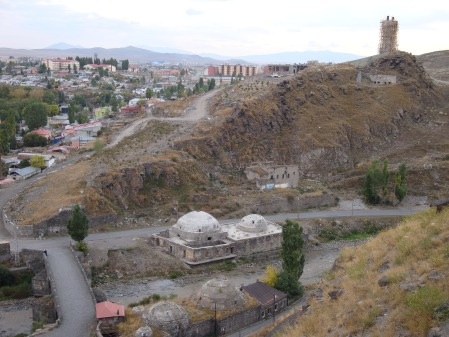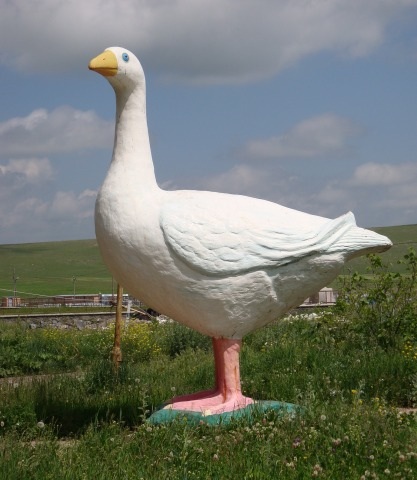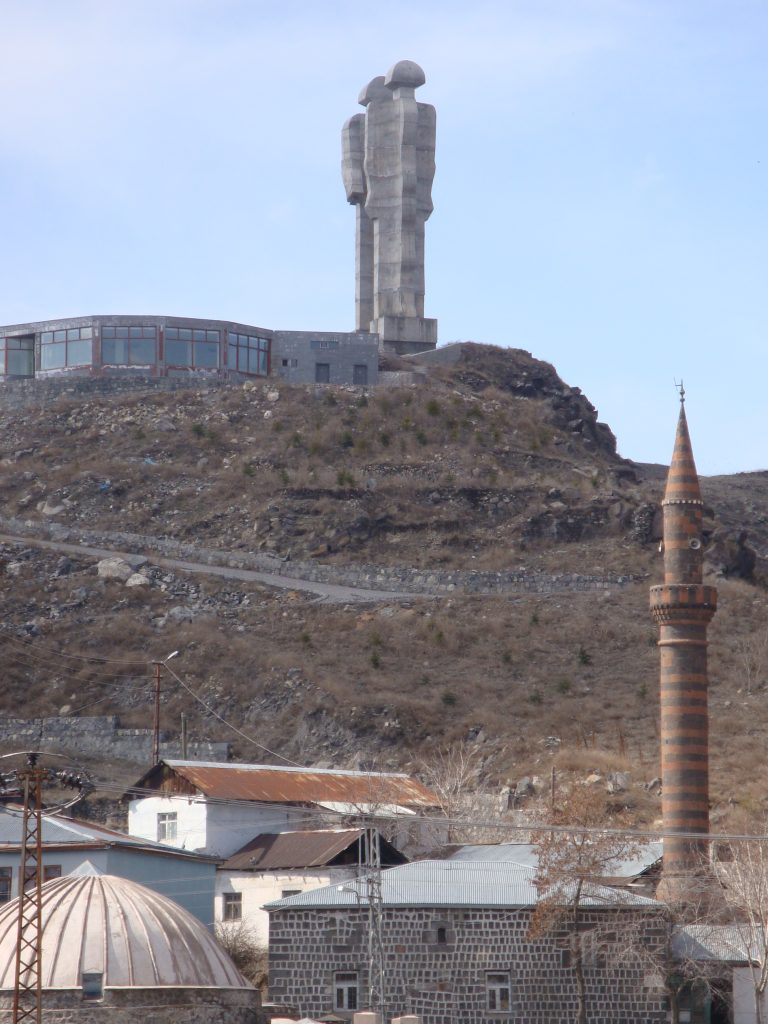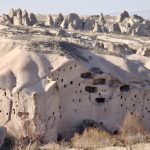It’s a story that has become set in stone. It goes something like this. In 2008 sculptor Mehmet Aksoy started work on a 30-metre-high statue of a man and a woman in Kars in northeastern Turkey. He called it Insanlık (Humanity) or possibly Dostluk (Friendship) – opinions seemed to vary around town. All went well until Prime Minister Recep Tayyıp Erdoğan rode into town and denounced the sculpture as “ucube (a monstrosity)”. Immediately it was demolished. End of story.
Except that it wasn’t really because that was only ever part of a story that is now endlessly recycled as evidence to support all sorts of arguments, most recently in a piece in The Economist on the threat to İstanbul’s heritage. How do I know that it is only part of the story? Because I was in Kars in 2008 when the statue was being sculpted.
“Of course it’ll have to come down again,” my guide told me. “It doesn’t have planning permission.”
In a country littered with the shells of buildings thrown up without planning permission that might have seemed a minor detail except that this was no minnow of a statue that could hope to slip in under the radar. Look at that height again. Thirty metres! A third as tall again as Antony Gormley’s famous and much-loved Angel of the North in the UK.
The statue loomed over the old part of town where a lot of work has been done – and is still being done – recently to make it more attractive to visitors. Reportedly it was intended to be visible in neighbouring Armenia too. And there lies the rub. Because Insanlık was always destined to get caught up in the complex politics of this remote and impoverished corner of the country. Despite frequent suggestions that it might reopen, the border between Turkey and Armenia has been closed since 1993. Economically this is a disaster for Kars which would be the main beneficiary of trade between the two countries. Accordingly, the mayor was said to have tipped Aksoy the wink as part of a broader campaign to improve relationships between the two modern states despite their fraught history.
But Insanlık also soared above a mosque on whose renovation vast sums of money had also been spent. This, rather than aesthetic considerations, is said to have been what so incensed the prime minister.
Kars has form when it comes to public monuments. Like Australia, Turkey relishes placing giant statues of items closely associated with different places in prominent locations. So Van has (had?) its giant Van cat, İnegöl has its supersized köfte (meatball) and Denizli its enormous rooster. But the current administration is having no truck with anything so common and the streets of Kars are now lined with kitsch pseudo-Classic statuery. Meanwhile in a corner of the local bus station the outsize statue of one of the geese for which the city is famed sulks like a child sent to stand in the corner for misbehaviour.
So what did I think about the statue having seen it both during and after its creation? Well, I can hardly put my hand on my heart and say that I loved it but then before it was erected I couldn’t say that about the Angel of the North either. Certainly Aksoy is as serious an artist as Gormley and his memorial to the War of Independence in Selçuk is probably the finest in Turkey. In the end, though, the devil was in the symbolism. What message could it possibly send out to tear down a monument to Turkish-Armenian friendship, no matter whether it had planning permission or not?
My issue is merely with the blurring of fact and fiction to buttress a general case against the governing party.
Written: 1 February 2013

